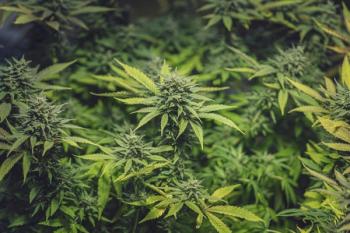
Assessing Financial Impacts of Pharmacist-Led Interventions in Pediatric Ambulatory Care
According to a poster abstract presented at the ASHP Midyear Clinical Meeting & Exhibition, specialty pharmacy services were used for a variety of conditions that have been reported in adult populations.
In a retrospective, single-center, cohort study, results demonstrated that pharmacists at a pediatric health system specialty pharmacy (HSSP) performed clinical interventions beyond daily activities, which resulted in a significant financial impact.
According to a poster abstract presented at the Health-System Pharmacists Midyear Clinical Meeting & Exhibition held in Anaheim, California from December 3, 2023, to December 7, 2023, SP services were used for a variety of conditions that have been reported in adult populations.1
In a retrospective, single-center, cohort study conducted between January to December 2022, patients from Children’s Health of Orange County (CHOC) SP were queried to quantify pharmacists’ clinical interventions and report cost avoidance associated with SP.
Secondary outcomes of the study included severity classification and prevention of adverse drug events (ADE), and estimated pharmacist time spent.
CHOC SP is an integrated pediatric HSSP that services patients with cystic fibrosis (CF), inflammatory bowel disease (IBD), rheumatology and inflammatory conditions (RIC), and growth hormone (GH) disorders.
Patients that were either followed by providers at CHOC medical specialty clinics or those who opted into CHOC SP services for disease management were inclusion criteria. Gender, age, therapeutic category, medical condition, specialty medications, pharmacist’s intervention, progress notes, and time spent of intervention were data collected.
Types of interventions—drug interactions, drug not indicated, adverse drug events, drug allergy—were systematically assigned a cost avoidance impact based on current literature, according to the study.
The Common Terminology Criteria for Adverse Events (CTCAE) was used to evaluate impact and severity of the level of care needed to treat an ADE, if an ADE happened. To determine cost avoidance, the average health charges of care (from Pediatric Health Information System) was used.
In all, 119 patients received 238 clinical interventions associated with clinical impact leading to potential cost avoidance, with ages ranging from 5 months to 23 years (mean: 14.7 years).
For therapeutic categories, there were 29 patients for CF (24%), 31 for IBD (26%), 39 for RIC (33%), and 20 for GH disorders (17%).
According to the results, the overall cost avoidance was $476,062. The most cost avoidance was associated with interventions related to drug interaction ($107,248, 23%). Coordination of care for additional test needed prior to therapy initiation was next ($94,712, 20%), followed by adverse drug event ($77,999, 16%), and sub-optimal dosing duration, frequency, or administration ($71,213, 15%).
From there, medication monitoring needed was next ($53,676, 11%), followed by undertreatment of conditions due to disease progression ($23,730, 5%). An additional $47,483 (10%) cost avoidance was added by other clinical interventions, mostly from coordination of care activities.
Eight of the 47 ADE reported (17%) were reported to MedWatch because of high severity.
Pharmacist time spent during intervention ranged from 0 to 15 minutes (116), 15 to 30 minutes (71), 30 to 45 minutes (23), 45 to 60 minutes (13), and over 60 minutes (8).
Investigators concluded that pharmacists at the pediatric HSSP performed clinical interventions beyond their daily clinical and operational activities.
Quantification of interventions, “demonstrated the high quality of a SP program, which helps advocate for pharmacy service expansions,” the authors noted.
The performance data highlighted in the study can be used by health-system administrators in contract negotiations with health plans.
SP pharmacists spent a large amount of time on care coordination, which can be difficult to assign a cost avoidance.
The study authors concluded that, “the subjective nature of impact quantification can be minimized by establishing intervention documentation models, following published literature, and a review committee.”
Reference
1. Yen J, Kim A, Tran K, Cooper A, Tu K. Economic impact of clinical pharmacist interventions in an integrated pediatric health system specialty pharmacy. Abstract. Presented at: Health-System Pharmacists Midyear Clinical Meeting & Exhibition held in Anaheim, California. December 3, 2023, to December 7, 2023.
Newsletter
Pharmacy practice is always changing. Stay ahead of the curve with the Drug Topics newsletter and get the latest drug information, industry trends, and patient care tips.



































































































































